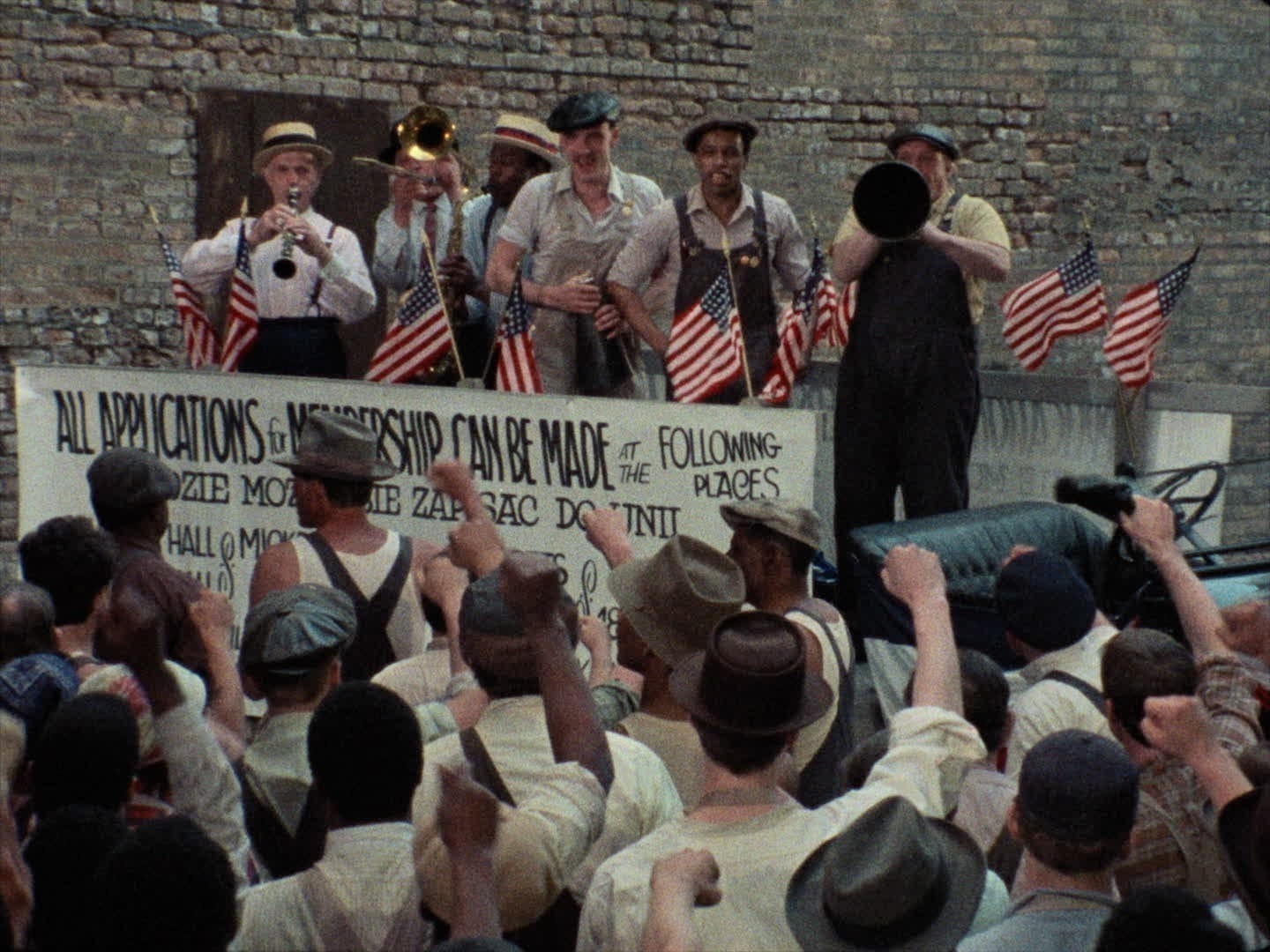Love’s Labors: The Killing Floor Illuminates the Dream of an Interracial Workers’ Movement

Labor films are not where one typically goes when seeking love and grace. They are more often concerned with bodies subjected to torsion and the furrowed brow of someone who knows the cupboards are growing bare. Then there are the feet pounding away on a picket line and the grimacing faces of strikebreakers. For good reason, the movies tend to revolve around the explosive point of contact between the competing classes. Union films are war films by other means. The struggle lends itself easily to a sweeping narrative. “Will we or won’t we have a union?” is a local question, but the answer ripples outward beyond the confines of any one shop. Victory, like defeat, is contagious. These kinds of films provide a worthy service by displaying the high cost that is glossed over in a slogan like “unions—the folks that brought you the weekend.” The struggle for a dignified workplace has always gone hand in hand with the struggle for free time. Those short hours are often skipped over in a story’s rising action, but they are the ones filled with the affinities that make the fight worth fighting.
The Killing Floor knows all of this. It depicts the attempt to form an interracial union at a Chicago meatpacking plant in the years leading up to the race riots of 1919’s Red Summer. It is on one level an archetypical Great Migration tale. With many white workers abroad during World War I, Frank Custer (Damien Leake) heads north for better prospects only to confront a labyrinth of middlemen, cruel bosses, and white supremacy. Under Bill Duke’s direction, the movie is no romance, but it is a kind of love film, equally at ease with rousing speeches as with a man pulling a blanket up over a sleeping friend. It originally aired on public television before screening at the U.S. Film Festival (later renamed Sundance) in 1984.
Duke has had the kind of career that could be called trailblazing if its path didn’t seem impossible to follow. He acted in the premiere run of Melvin Van Peebles’s Broadway show Ain’t Supposed to Die a Natural Death, worked with the Negro Ensemble Company, appeared alongside Arnold Schwarzenegger in Predator and Commando , and helmed an adaptation of Chester Himes’s novel A Rage in Harlem that premiered at Cannes. After Broadway but before his run with the Austrian Oak, he managed to craft The Killing Floor.
Although it was Duke’s feature-length directorial debut, it is propelled by strikingly beautiful and precise images, interspersed with archival footage functioning like newsreels from the wider world. When Thomas (Ernest Rayford), Frank’s best friend, is beaten in the slaughterhouse, the film cuts to a cow, then to the two men walking out, followed by a bowl of water gone ochre with blood. Frank’s first job at the plant is mopping up floors to keep them from getting slick with the butchery’s fluids. It turns out to be good practice for this moment, which finds him, rag in hand, sopping up and wringing out the blood from a wounded face. Thomas gets the message and enlists to fight in Europe. Frank stays and joins up with the mostly white union men because he believes their cause is just. He becomes a hero not because he is brave, though he is, but because he doesn’t know another way to be.







